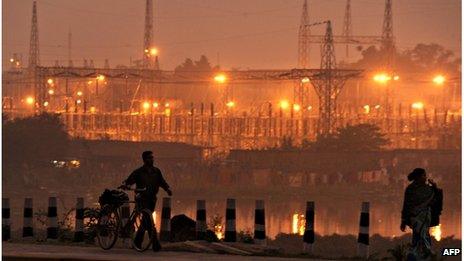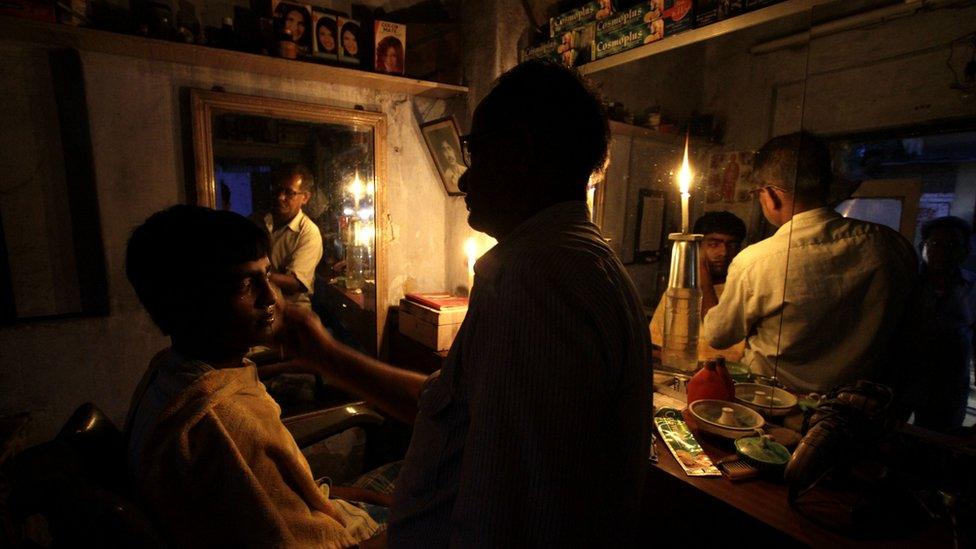Ten interesting things about India power
- Published
- comments

India's energy demands are soaring
As India copes with a massive power breakdown for a second successive day, some interesting facts about the country's power situation to chew on:
India has an installed capacity of more than 170,000 megawatts, up from a mere 1,362 megawatts at the time of Independence in 1947
The majority (around 60%) is generated from coal and lignite, while just under a quarter (about 22%) is hydro-electric
Despite its soaring energy needs, India has one of the lowest per capita rates of consumption of power in the world - 734 units as compared to a world average of 2,429 units. This is nothing compared with say, Canada, (18,347 units) and the US (13,647 units). China's per capita consumption (2,456 units) is more than three times that of India.
The low per capita consumption is despite the fact that the power sector has been growing at more than 7% every year.
Homes and farms are consuming more power today than industries and businesses. Industrial consumption has actually dropped from 61.6% in 1970-71 to 38% in 2008-2009.
India has suffered consistent power shortages since Independence in 1947. Peak demand shortage is more than 10%, whereas the overall energy shortage is more than 7%.
Sixty-five years after Independence, only nine states - Andhra Pradesh, Gujarat, Karnataka, Goa, Delhi, Haryana, Kerala, Punjab and Tamil Nadu - of 28 have been officially declared totally electrified.
India remains perennially energy starved despite 15% or more of federal funds being allocated to the power sector. Bankrupt state-run electricity boards, an acute shortage of coal, skewed subsidises which end up benefiting rich farmers, power theft, and under-performing private distribution agencies are to blame, say experts. There is no shortage of money, and the problem, as the Planning Commission admits, is more "in the delivery process [than] in the system".
Transmission and distribution losses have leapt from 22% in 1995-96 to about 25.6% in 2009-2010. The states with the worst losses are Indian-administered Kashmir, Bihar, Chhattisgarh, Jharkhand and Madhya Pradesh. The best performers: Punjab, Himachal Pradesh, Andhra Pradesh and Tamil Nadu.
India's first power generation company was the private Calcutta Electric Supply Corporation (CESC) started in 1899. The first diesel power plant was set up in Delhi in 1905. The first hydro-electric power station was set up in Mysore in 1902. At the time of Independence, about 60% of India's power sector was privately owned. Today, about 80% of the installed capacity is in the hands of the government. Private companies own 12% of the capacity.
- Published31 July 2012
